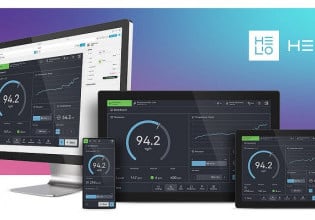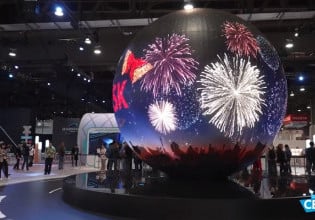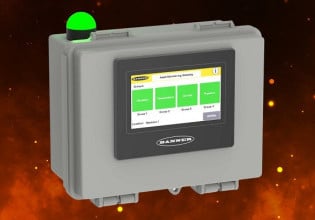A Look at IO-Link Enabled Optical Code Readers from Balluff
Balluff has released their IO-Link enabled IDENT series of optical code readers capable of reading 1D and 2D codes of different protocols for use in manufacturing, packaging, and shipping.
Balluff recently announced that their newest line of optical code readers, the IDENT series, is now available. The IDENT sensors are designed with IO-Link capabilities, meaning that separate IP addresses and Ethernet cables for each sensor are not required. Capable of reading 1D and 2D codes of different protocols, these sensors will likely find their way into many manufacturing lines.

Balluff IDENT sensor. Image used courtesy of Balluff
IO-Link Capable Code Readers
Balluff designed the IDENT line to be IO-Link capable, which drastically reduces the complexity of the data acquisition system. IO-Link is a bidirectional communications protocol that connects sensors and controls to a fieldbus or industrial Ethernet device. Without IO-Link, each sensor would need to have its own Ethernet connection complete with its own IP address, drastically increasing the complexity of the automation system. Instead, the IO-Link capability allows multiple sensors to be connected through a single device. For the IDENT code readers, this means multiple scanning locations can be implemented on an assembly line with only one Ethernet connection needed.
Besides being IO-Link capable, these sensors are also ready to integrate with MQTT or REST API data interfaces. Both protocols are widely used in manufacturing as part of the IIoT.
The IDENT code readers can read 1D codes, such as standard bar codes, and 2D codes, such as QR codes. While barcodes are the standard at the grocery store, QR codes and other 2D code methods are less prone to read errors. How many times has a grocery item not scanned at the self-checkout lane? 2D codes can be read more easily, and thus the whole operation is faster.
These code readers are IP67, making them suitable for dusty, damp environments, such as food and beverage manufacturing, as well as machining operations. They can be purchased in models that emit white light and red light or infrared light, making them suitable for different environments where background lighting could be an issue.

Balluff envisions packaging operations as a prime candidate for IDENT sensor deployment. Image used courtesy of Balluff
IDENT's Potential Markets
Most people hear “barcode” and they think of checking out at the grocery store. In an industrial setting, barcodes and other coding are used to track the movement of goods through a factory. These codes can be linked to a device’s serial number, lot numbers for batch processing, and other such operations. Maintaining a good code system allows any quality excursions to be isolated, processes to be started more quickly after an interruption, and more data that can be collected for optimization purposes.
Typically, code tracking is used for high-cost, customizable items with lots of processing steps or requiring high-quality control for regulatory purposes. Examples include machine parts, which may have multiple processing steps; food manufacturing, which must be easily traceable for product recalls; and other such items.
Automated code readers integral to the manufacturing line are faster and more accurate than having operators manually scan items. Packaging of goods, which benefits from having fewer hands touching the goods, will benefit from automated code reading.

Balluff's optical code reader demonstrated at ATX West 2023.
Improving the Flow of Goods
Overall, the IDENT code readers have the potential to improve the flow of goods through manufacturing, packaging, and shipping departments. Their ease of installation and configuration will make them an attractive choice for modernizing legacy manufacturing plants or building new plants in the future.






